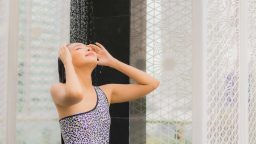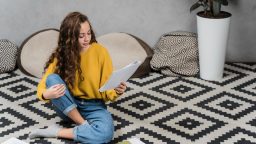Learning how to style bookshelves without books in 2025 means transforming empty shelves into curated design features that elevate a room through texture, balance and personality. Modern interiors increasingly favour clean, intentional displays rather than cluttered storage, and a bookshelf without books offers the perfect canvas for creative styling. Instead of filling gaps with random décor, the goal is to craft a cohesive visual flow that feels deliberate, calm and contemporary.
Start by choosing a theme that anchors the overall look. Whether you prefer organic minimalism, sculptural modernism or warm, earthy accents, a clear direction helps prevent the shelves from feeling scattered. When a bookshelf has no books, every piece becomes more visible, so consistency in tone, shape or material keeps the display harmonious. Select a colour palette of two or three shades that echo the room, such as soft neutrals, muted greens or brushed metallics.
Vases are one of the most versatile styling elements. In 2025, oversized ceramic and matte stone vases are especially popular because they introduce height and natural texture without overwhelming the space. Mix tall and medium shapes for depth and avoid placing them in symmetrical pairs unless your interior emphasises formality. A single sculptural vase can become the focal point of an entire shelf, especially when paired with a dried botanical stem or a minimal arrangement of faux greenery.
Decorative bowls add movement and warmth. Choose shallow wooden bowls for a calming, organic feel or metallic designs for a more polished look. These pieces work well on lower shelves where their shape can be appreciated from above. If you prefer a more functional touch, bowls can hold small items like keys or jewellery while still appearing styled.
The question of how to style bookshelves without books often leads to the use of art and framed prints. Leaning artwork against the back of the shelf adds dimension and makes the display feel more layered. Smaller frames can be placed in front of larger ones to create gentle visual depth. Abstract pieces, line drawings or minimalist photography bring elegance without overpowering the arrangement.
Sculptures and objets d’art play an increasingly central role. Choose items with interesting silhouettes — geometric shapes, carved figurines, handcrafted ceramics or smooth stone objects. These pieces work best when spaced generously, allowing each object to stand out. Avoid overcrowding; a few impactful items make a stronger impression than a shelf crammed with décor.
Plants bring life to bookshelves that are otherwise purely decorative. Trailing plants, such as pothos or ivy, create soft, organic movement and break the rigid lines of the shelving. Compact succulents or small ferns suit tighter spaces and add colour without demanding high maintenance. When working with artificial plants, opt for high-quality variants with natural-looking textures.
Storage boxes and baskets add structure and hide everyday essentials. Linen-wrapped boxes, woven baskets and leather trays create warm, tactile contrasts that keep the shelves functional. Choose containers that complement your colour palette to maintain visual continuity. These pieces are especially helpful in multifunctional rooms where the bookshelf doubles as discrete storage.
Mirrored or metallic accents introduce light and reflection. In 2025, brushed brass, gunmetal and soft-gold finishes are trending, adding subtle luxury without feeling flashy. Place reflective pieces strategically to bounce light across the room and brighten darker corners of the shelf.
Balancing empty space is just as important as selecting décor. Negative space prevents the display from feeling heavy and helps draw attention to the key items you’ve chosen. Think in terms of visual rhythm — alternate between taller and shorter pieces, group items in threes and allow breathing room around statement objects.
For a curated, designer look, vary the orientation of the layouts. Some shelves can feature centred, symmetrical arrangements, while others use off-centre styling for a more dynamic feel. This variation creates a natural flow that feels intentional rather than formulaic.
Ultimately, mastering how to style bookshelves without books in 2025 comes down to thoughtful curation, balanced composition and an understanding of your interior aesthetic. By mixing textures, heights and shapes, and by allowing space for each object to shine, your bookshelf becomes a stylish focal point instead of an empty storage unit.
A well-styled bookshelf enhances the room, reflects your personality and brings harmony to the overall design. Keep refining the arrangement until it feels cohesive and natural, and don’t hesitate to seek guidance from interior styling specialists if you want a more tailored approach.





